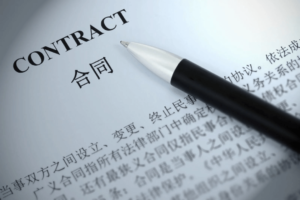Table of Contents
ToggleIntroduction
China’s patent system, with its intricate rules and regulations, has become a pressing concern for inventors and businesses worldwide. The nation’s rapid technological evolution, coupled with its ‘first-to-file’ rule, poses a formidable challenge for foreign entities striving to protect their intellectual property (IP). In this discussion, we will shed light on the intricacies of China’s patent system, outlining the stark differences between invention, utility model, and design patents. Furthermore, we will illuminate the urgent necessity for foreign businesses to take proactive steps in protecting their IP from being patented by Chinese manufacturers.
China’s Patent System: A Double-Edged Sword for Foreign Companies
In the global race of technological innovation, China is leading the pack. With an exponential increase in domestic patent applications and granted patents in recent years, China’s patent system is proving to be efficient and robust. However, this system presents both opportunities and threats for foreign companies.
Underpinning this threat is the ‘first-to-file’ rule, which is the cornerstone of China’s patent system. Regardless of who first invented the technology, patent rights are awarded to the first company or person who files a patent application. This stark difference from the ‘first-to-invent’ or ‘first-to-use’ systems followed in many other countries underscores the importance of immediate action in patent filing.
The Dire Necessity to Protect Design Patents
Alarmingly, it has become increasingly common for Chinese manufacturers to patent the designs of foreign companies, especially when it comes to design patents. Design patents protect new designs relating to a product’s shape, pattern, color, or their combination, as long as they create an aesthetic appeal and are fit for industrial application.
With the proliferation of e-commerce platforms and rapid digital information exchange, Chinese manufacturers can easily access and replicate designs from foreign companies. Once replicated, they can swiftly secure design patents, leveraging the ‘first-to-file’ rule. This is particularly concerning, as design patents in China last for 15 years from the filing date, during which the legitimate foreign inventor may be barred from using their own designs.
Averting Potential Pitfalls
In light of these challenges, foreign businesses need to take proactive steps to protect their IP in China. Key measures include:
- Prompt Filing: Given China’s ‘first-to-file’ system, it is imperative to file for patent protection as promptly as possible. Any delay can lead to a loss of patent rights.
- Professional Assistance: The process of filing a patent application in China is complex. It’s crucial to seek professional help to navigate this process, avoid errors, and meet all deadlines.
- Accurate Translation: Patent documents must be filed in Chinese. Ensuring accurate translation is critical to avoid weakening the patent scope or facing rejections.
- Substantive Examination: For invention patents, understanding and preparing for the unique substantive examination process is vital.
Conclusion
The urgency of navigating China’s patent system cannot be overstated for foreign companies. With the increasing trend of Chinese manufacturers patenting foreign designs, it’s critical to understand the Chinese patent system’s unique features and act swiftly to protect intellectual property. Understanding the differences between invention, utility model, and design patents can guide effective patent strategy. In this rapidly evolving technological era, taking preemptive measures against potential IP threats in China can be the difference between business growth and loss of valuable IP rights.
FAQs
1. What types of patents are recognized in China?
China acknowledges three types of patents: invention, utility model, and design patents. Each caters to different technological advancements and has different durations of protection.
2. How does China’s ‘first-to-file’ rule pose a threat to foreign businesses?
The ‘first-to-file’ rule in China’s patent system grants patent rights to the first person who files a patent application, regardless of who first invented the technology. This means that if a foreign business doesn’t file promptly, a Chinese manufacturer could potentially file a similar patent and secure the rights first.
3. Why are design patents a particular concern for foreign companies?
Design patents protect new designs related to a product’s shape, pattern, color, or their combination. With the widespread use of e-commerce and digital platforms, Chinese manufacturers can easily access and replicate designs from foreign companies. They can then secure design patents for these designs, effectively barring the original creators from using their own designs in the Chinese market.
4. How can foreign businesses protect their intellectual property in China?
Foreign businesses can protect their intellectual property in China by filing for patent protection promptly, seeking professional assistance during the patent application process, ensuring accurate translation of patent documents, and preparing for the substantive examination process for invention patents.
5. What happens if a patent application is rejected in China?
If a patent application is rejected, a re-examination can be requested within three months of receiving the rejection notice. During re-examination, the applicant can correct errors or argue against the rejection decision. It’s advisable to seek legal assistance during this process.
Contact us if you need help with protecting patents in China and internationally, background investigation of Chinese companies, drafting contracts that are effective in China, verification of contracts to the law in China, or help with other legal challenges that you have in China.
If you require our assistance or have further questions about our services, please do not hesitate to contact our Customer Relationship Manager, Jan Erik Christensen, at janerik@ncbhub.com. We look forward to hearing from you and helping your business succeed in China.








